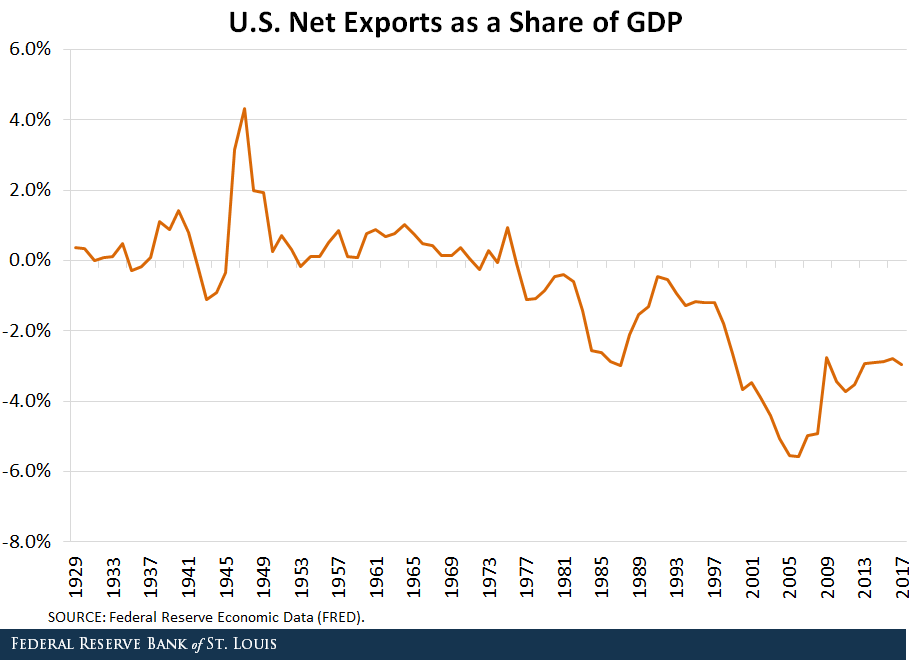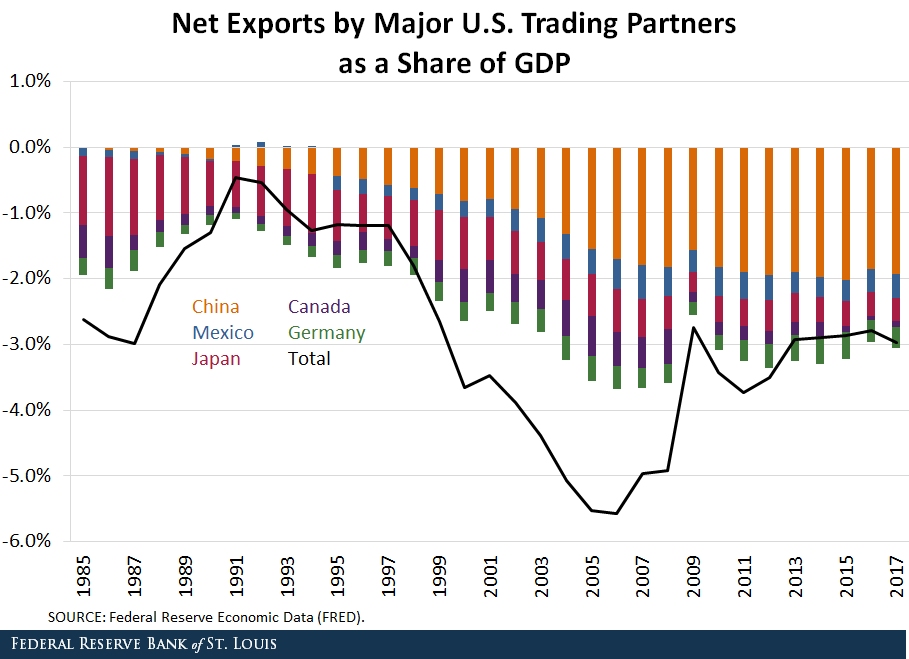
from the St Louis Fed
— this post authored by Maximiliano Dvorkin, Economist, and Asha Bharadwaj, Research Associate
The U.S. is one of largest importer and exporter countries in the world. According to economic theory, countries should export goods in which they have a comparative advantage in production and import those in which they do not.

Recently, the U.S. imposed tariffs on imports from several foreign nations, citing the growing U.S. trade deficit as one reason. In this post, we examine the U.S.’s overall trade deficit, as well as the trade balance with respect to major U.S. trading partners.
The graph below depicts net exports for the U.S., which are defined as the difference between total exports and total imports.

It is interesting to note that the net-exports-to-GDP ratio for the U.S. has been negative since the late 1970s.
Several reasons for this persistent trade deficit have been proposed by economists. One explanation involves important sources of income the U.S. receives from abroad (as explained in this FRED Blog post) which allows the U.S. economy to consume in excess of what it produces.
While exploring this and other theories in detail is beyond the scope of this post, this persistent trade deficit leads to interesting questions involving the U.S.’s trading partners. For instance, is the trade deficit driven mostly by uneven trade with one particular country?
One way to answer this question is to look at the composition of the trade deficit in terms of the five largest U.S. trading partners, as seen in the figure below.

It is interesting to note that the largest share of the trade deficit in the 1990s originated from trade with Japan, but since 2001, China’s share in the trade deficit has been steadily growing.
This is the result of several factors, such as China’s entry to the World Trade Organization in late 2001 and the concurrent stagnation of the Japanese economy. In 2017, almost 65 percent of the U.S. trade deficit came from trade with China, and the trade deficit with China alone was 1.9 percent of U.S. GDP.















